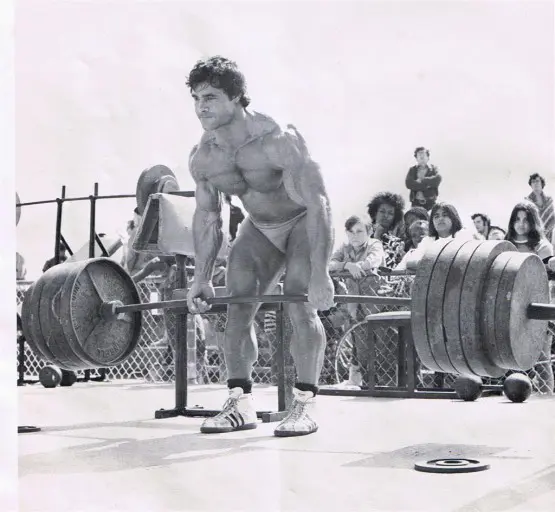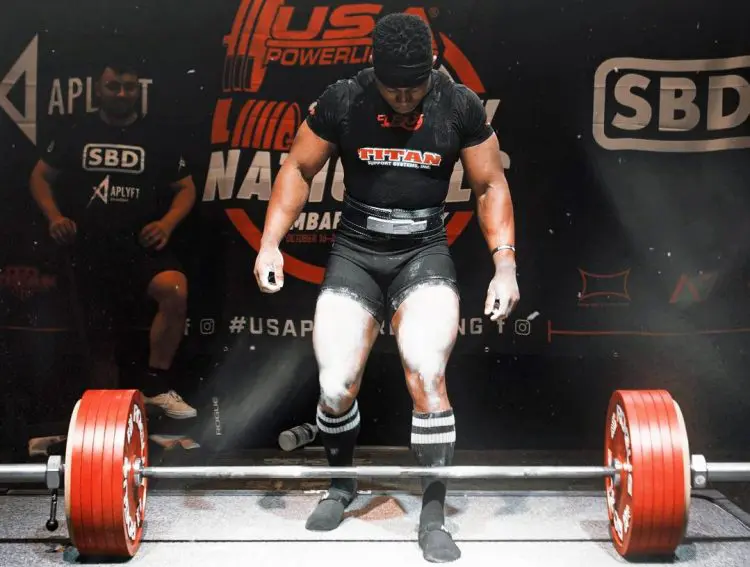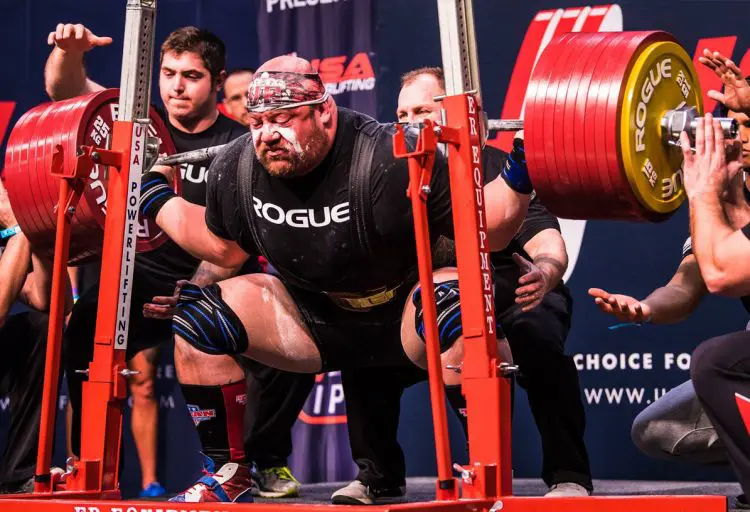There are many considerations that you must make as a new powerlifter. These include your powerlifting federation, weight class, training program, and lifting goals.
Before you can sign up for a powerlifting meet, you have a decision to make. You must decide whether you are to lift raw or equipped.
What exactly does this mean and what is the difference between the two?
This article will provide detail on both raw and equipped lifting and allow you to choose the right type of competition for you.
The History Behind Raw and Equipped Lifting
Powerlifting is a strength sport that revolves around three main lifts – the squat, bench press, and deadlift. The goal of powerlifting is to lift the greatest amount of weight possible with each movement.
In the early days of powerlifting, the use of equipment was rare. However, with advancements made in sports science and technology, powerlifters began to use specific equipment to help them improve their performance.
Level Up Your Fitness: Join our 💪 strong community in Fitness Volt Newsletter. Get daily inspiration, expert-backed workouts, nutrition tips, the latest in strength sports, and the support you need to reach your goals. Subscribe for free!

Most notably, back in the ’70s and ’80s, sports manufactures started to produce supportive lifting singlets or suits.
These singlets rapidly grew in popularity and, by the 1990s, there were few powerlifters who would lift without them.
These extremely tight-fitting suits utilized elastic energy to facilitate heavy lifting. It is estimated that using this equipment allows athletes to lift 115% or more of their one-rep max!
However, the use of equipment extended further than these constrictive suits. Weight belts, lifting shoes, knee wraps, wrist wraps, and athletic tape had become commonplace.
Research has shown that these pieces of equipment can facilitate an improvement in strength performance (1).
Therefore, the powerlifters who were competing while using an array of equipment were at a significant advantage over those who weren’t.
However, at this point, there were few regulations regarding equipment use.
Some in the powerlifting community believed that powerlifting should not use performance-enhancing equipment such as squat and deadlift suits and bench tees.
After a period of petition, a number of powerlifting federations decided to bring in “raw” competitions alongside equipped events.
In 2012, the International Powerlifting Federation (IPF), often seen as the gold-standard of powerlifting, also introduced a raw event known as the “Classic Unequipped World Cup”.
They also published their own interpretation of unequipped or “raw” lifting that must be followed by all competitors.
Since then, raw powerlifting has experienced a surge in popularity to the point that it now appears that more athletes compete in raw competitions than equipped.
What Is Raw Lifting?
As the name suggests, raw competitions do not permit the use of certain pieces of equipment.
However, although “raw” suggests no equipment can be used, most federations allow for the use of a weight belt, lifting shoes, knee sleeves, wrist wraps, and chalk.

That said, you should always read through the rules and regulations outlined by your chosen powerlifting federation.
Some federations actually have two categories within raw lifting – classic raw and modern raw.
The difference between the two is that classic raw events do not permit the use of knee wraps. Modern raw events do permit the use of knee wraps but may allow knee sleeves.
The IPF does not permit knee wraps but lifters can wear knee sleeves, therefore, their unequipped events can be considered as “modern raw”.
Interestingly, however, the IPF does not recognize the word “raw,” rather, they simply refer to either “equipped” or “unequipped” events.
What Is Equipped Lifting?
Equipped lifting, meanwhile, allows for the use of performance-enhancing equipment, specifically deadlift and squat bodysuits and bench press shirts.
There are two categories within equipped lifting that you should be aware of – single-ply and multi-ply.

As you may be able to guess, these categories refer to the type of suit or shirt worn by the athlete.
Every powerlifting suit is made with high tensile fabric that has been specifically designed to stretch and store elastic energy before then rapidly releasing it.
Single-ply suits are made up of only one layer of this fabric while there are many layers found in multi-ply suits.
As reflected on, both types of suits utilize elastic energy which allows the lifter to handle more weight and improve strength performance (2).
The best analogy that can be used to describe the action of these suits is to consider an elastic band.
When the band is stretched, elastic energy is produced. Letting go of one end of the band releases this energy and causes the band to ping back to its original shape.
The same mechanism occurs when performing the squat, bench, or deadlift. As the lifter lowers the bar, the suit becomes significantly stretched.
As the lifter transitions and begins to drive the bar up, the elastic energy is released and facilitates the lift.
Level Up Your Fitness: Join our 💪 strong community in Fitness Volt Newsletter. Get daily inspiration, expert-backed workouts, nutrition tips, the latest in strength sports, and the support you need to reach your goals. Subscribe for free!
Multi-ply suits generate more energy and consequently improve strength performance more significantly than single-ply suits.
Therefore, to ensure that lifters all have the same advantage, competitors are divided into these two categories.
Some competitions are exclusively single-ply and do not allow for multi-ply. Once again, you should check the standards set by your powerlifting federation.
Raw and Equipped Lifting Considerations
This section will cover a number of key considerations that you must make before deciding whether to compete in raw or equipped lifting.
Federation Regulations
As touched upon earlier, it’s important to recognize that powerlifting federations may have their own interpretation of both “raw” and “equipped”.
Additionally, be aware that some federations have very specific regulations relating to equipment. A belt that is acceptable for one federation may not be for another.
Knee wraps are a controversial topic in powerlifting. Some federations see knee wraps as equipped lifting while others do not.
These bandage-type wraps are tightly wrapped around the knees and appear to enhance knee stabilization and also help the athlete drive out of the squat with more force (3).
Training For Raw and Equipped Events
While there will evidently be similarities between raw and equipped training in terms of exercise selection and volume, there will be some minute differences.
For example, the squat and deadlift suits worn in equipped lifts are extremely restrictive.
Because they are so restrictive, the range of motion that equipped lifters may be less than the ROM used by raw lifters.
Equipped lifters will also have to become accustomed to their suits and shirts and break them in. The best way to do this is to use them in your training sessions.
Evidently, raw lifters do not have to train using suits or shirts. However, the same principle may still apply to the use of weight belts, lifting shoes, knee wraps / sleeves, and wrist wraps.
Although there may be small differences in your training approach, it is possible to compete in both raw and equipped events should you wish.
Understanding The Demands Of Equipped Lifting
Powerlifting is a demanding sport in general. However, equipped lifting is extremely taxing and places a huge demand on the body.
Firstly, because equipped lifting allows you to handle more weight, the demand placed on the body is greatly increased.
Secondly, to get the greatest advantage possible, these suits and shirts have to be super restrictive.
This type of compression in combination with heavy lifting can lead to loss of consciousness on occasion. Furthermore, the suits and shirts can be extremely uncomfortable or even painful to put on and move in.
You will need to spend some time using your suit in training to break it in and help you become accustomed to wearing the suit and shirt.
Finally, equipped lifting is much more technical than raw lifting and you must learn how to use the equipment safely and effectively. This will not happen overnight and will take time, patience, and hard work.
Failing to familiarize yourself with the equipment properly will not only lead to suboptimal performance in training and competition, but it may also increase your risk of injury.
Should You Compete Raw or Equipped?
Before considering this question, it should be stated that regularly participating in either raw and equipped lifting will lead to substantial improvements in muscle size and strength (4).
Neither method appears to be superior to the other for improving strength and hypertrophy.
Therefore, ultimately, the decision to enter a raw or equipped competition is entirely your decision. It may come down to how you personally view powerlifting.
That said, if you are a beginner, it is recommended to begin with a raw event first. This will let you experience how a powerlifting competition works without having to worry about additional equipment.
If you then want to progress onto equipped lifting, then by all means do so.
If your goal is to lift as much weight as you possibly can, then it would make sense to participate in equipped lifting.
That said, there are a greater number of risks associated with equipped lifting. This is primarily due to the use of highly compressive material that allows you to lift more than you normally would be capable of.
It’s important to recognize that it is not necessarily raw versus equipped lifting. As touched upon, it is possible to compete in both raw and equipped events should you desire.
Final Word
While equipped athletes can lift significantly more than their raw counterparts, equipped lifting is more demanding both physically and technically.
Equipped is not superior to raw and vice versa. Ultimately, personal preference is most important when considering the type of event to enter.
References:
1- Zink, A. J.; Whiting, W. C.; Vincent, W. J.; McLaine, A. J. (2001-05). “The effects of a weight belt on trunk and leg muscle activity and joint kinematics during the squat exercise”. Journal of Strength and Conditioning Research.
2- Blatnik, Justin A.; Skinner, Jared W.; McBride, Jeffrey M. (2012-12). “Effect of supportive equipment on force, velocity, and power in the squat”. Journal of Strength and Conditioning Research.
3- Cardyl Trionfante, “The Effects of Using Knee Wraps on Back Squat and Vertical Jump Performance. Cardyl Trionfante“.
4- Ferland, Pierre-Marc; Pollock, Alexander; Swope, Ryan; Ryan, Mark; Reeder, Michael; Heumann, Kristin; Comtois, Alain Steve (2020-05-01). The Effects of Using Knee Wraps on Back Squat and Vertical Jump Performance. Cardyl Trionfante. International Journal of Exercise Science.








